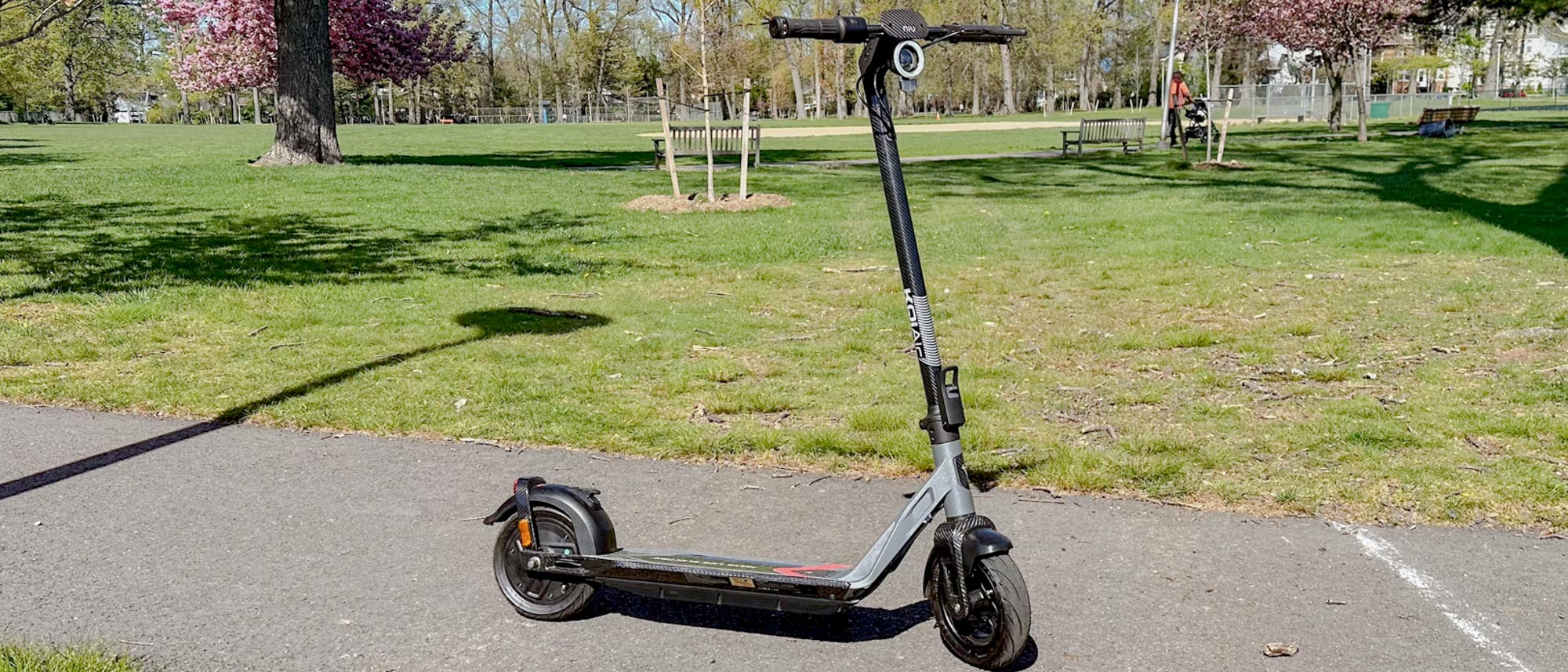Tom's Guide Verdict
Get the NIU KQi Air if you’re looking for a lightweight scooter that still manages to have a long range. However, it’s a bit on the pricey side, so if you’re looking for a budget model, we recommend the Hiboy S2.
Pros
- +
Very light
- +
Great range for the size
- +
Smooth ride
- +
Antitheft features
- +
Turn signals on handlebars
Cons
- -
Latching mechanism could be easier to use
- -
Connecting scooter to app can be finicky
Why you can trust Tom's Guide
One of the biggest compromises when it comes to buying an electric scooter is sacrificing weight for range. The heavier the scooter, the further you can generally go, as it packs in more batteries. But once you get to where you’re going, lugging it up a flight of stairs can literally become a Sisyphean task.
The NIU KQi Air is the exception; thanks to a carbon fiber chassis, it’s both lightweight, yet delivers a comfortable ride and a long range. And, it’s got some other niceties, such as turn signals and anti-theft features. While its asking price isn’t cheap, it’s the best electric scooter you can find.
NIU KQi Air review: Price and availability
The KQi Air was released in September, 2023; it was originally listed for $1,399, but is currently available for $1,049. You can purchase it from NIU directly or through Best Buy.
NIU KQi Air review: Design
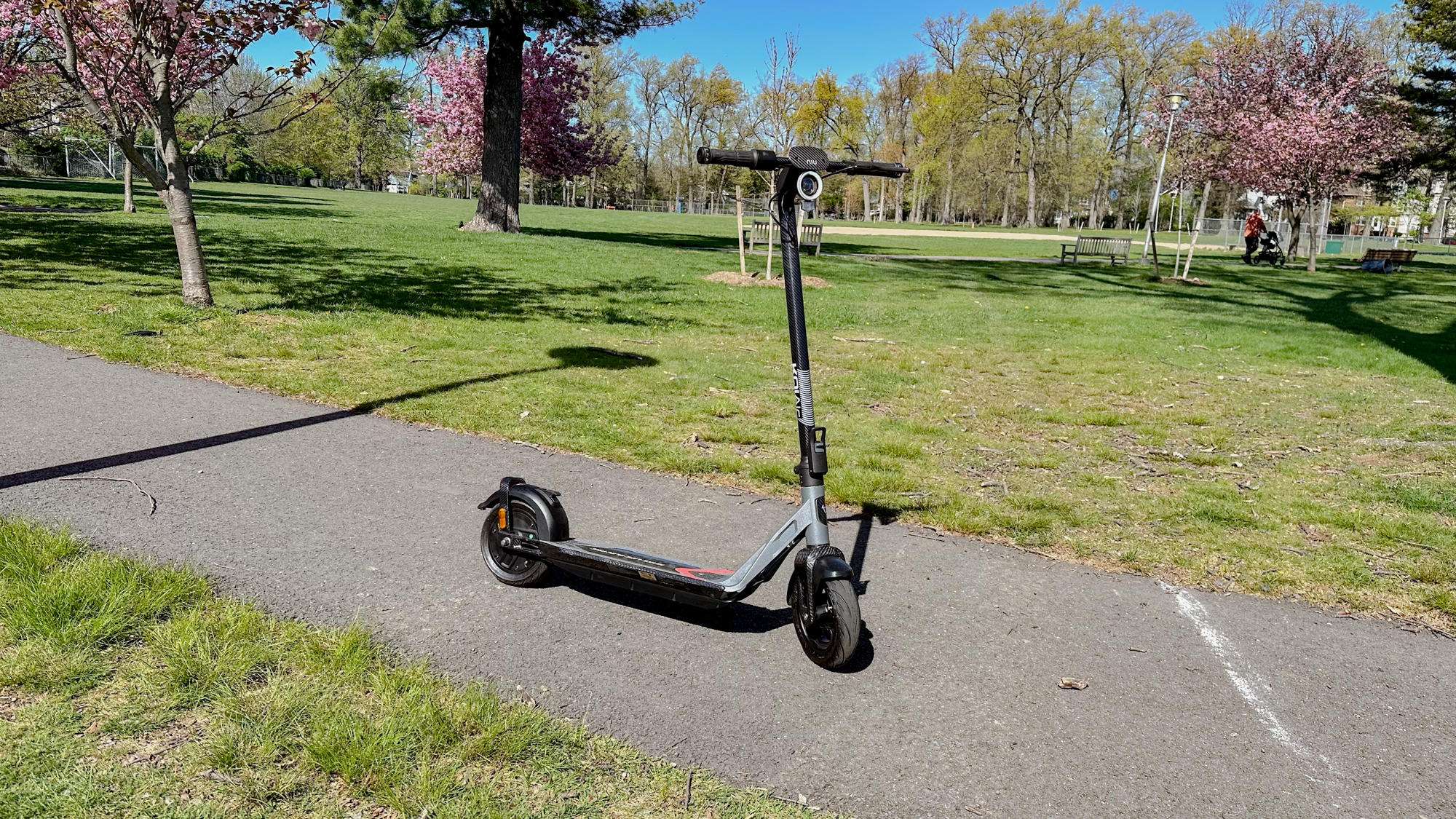
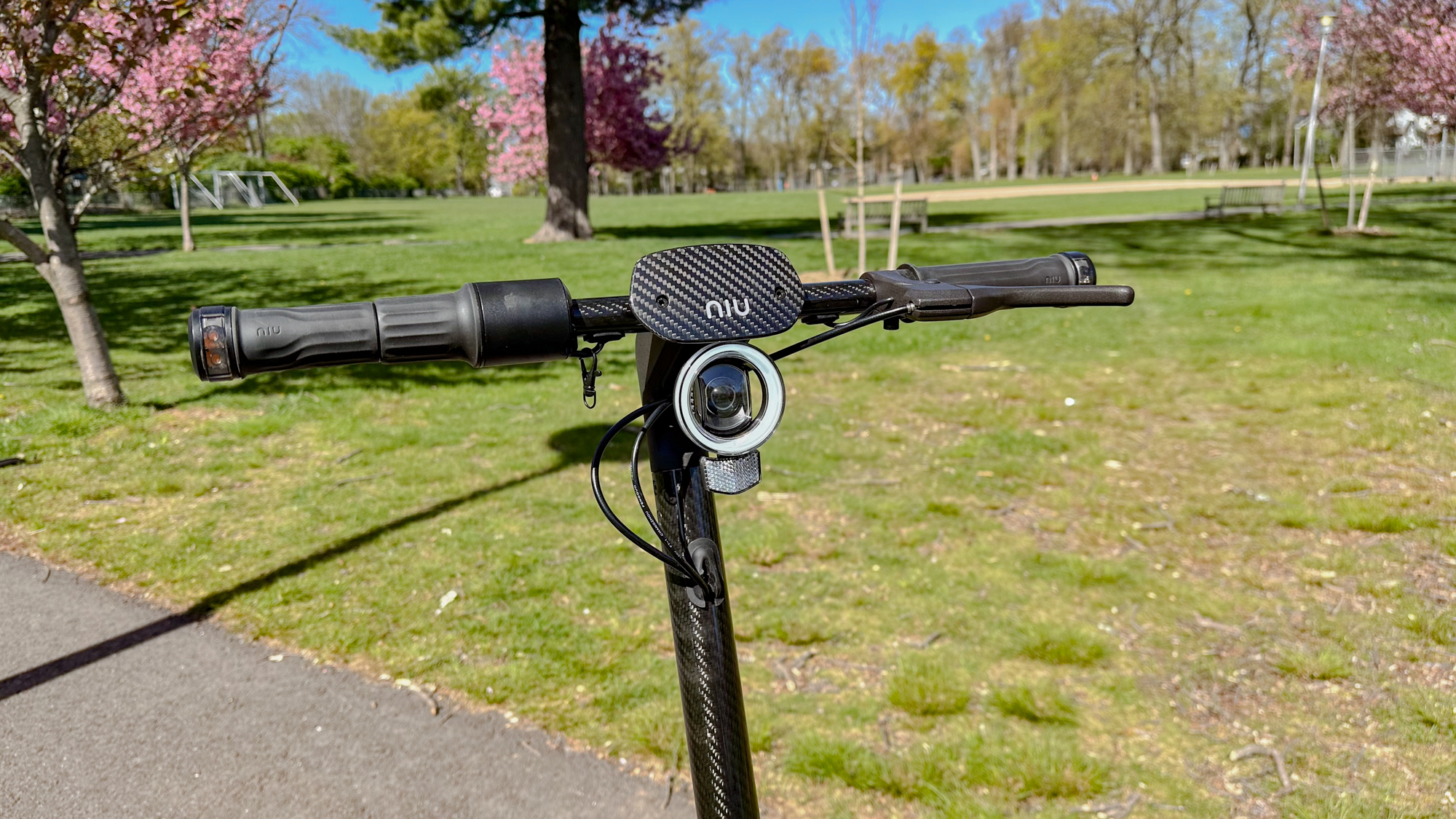
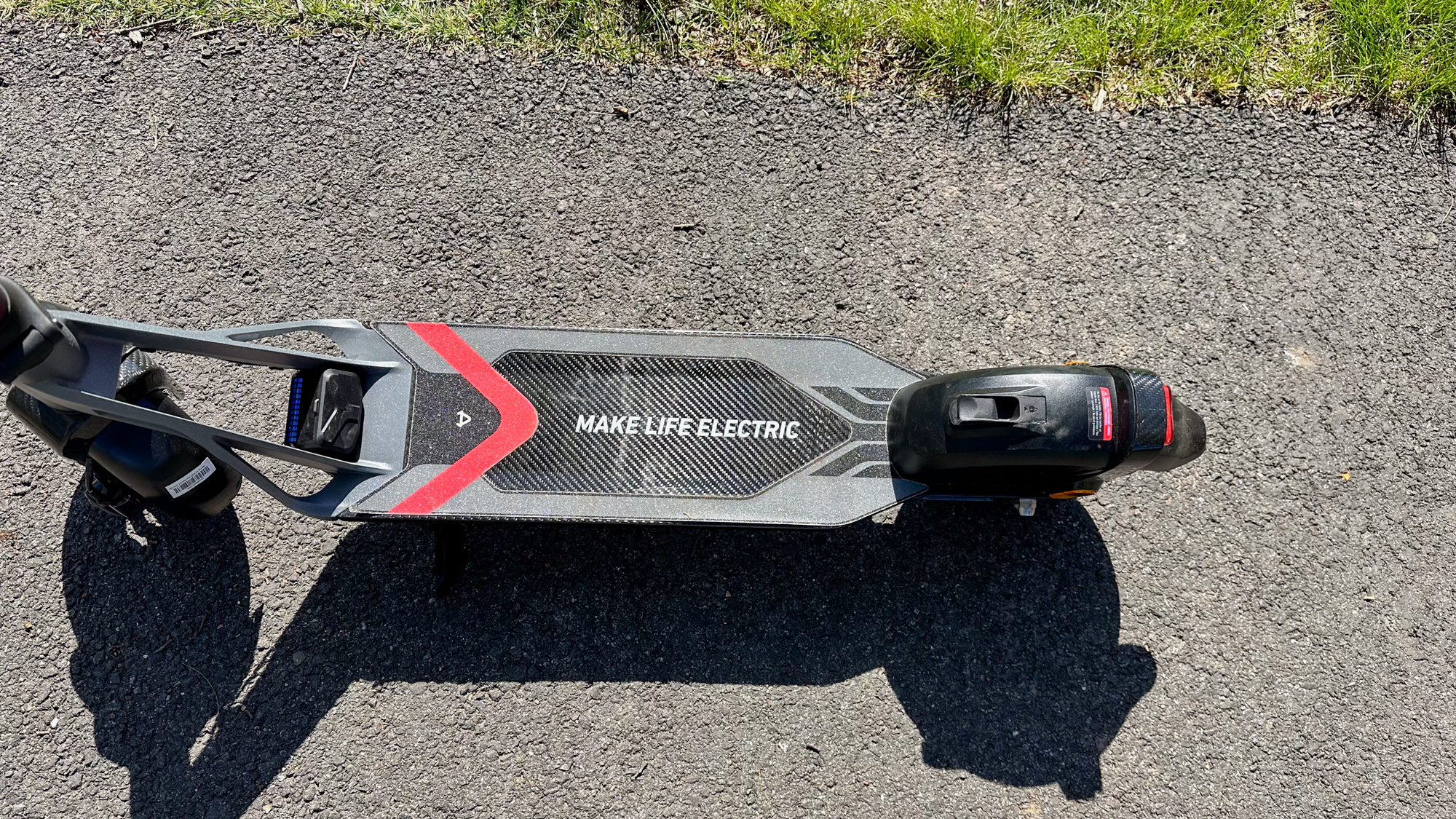
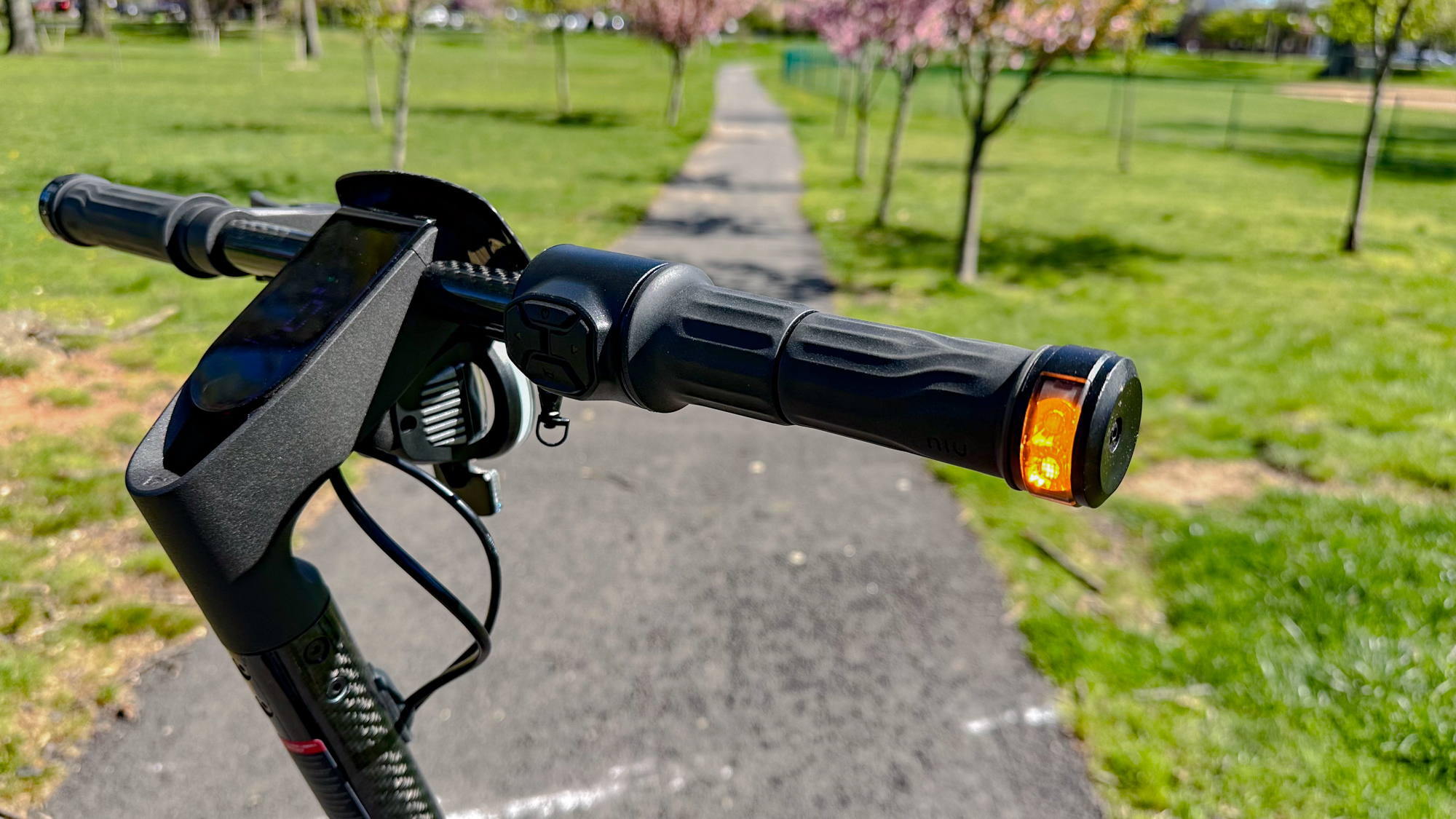
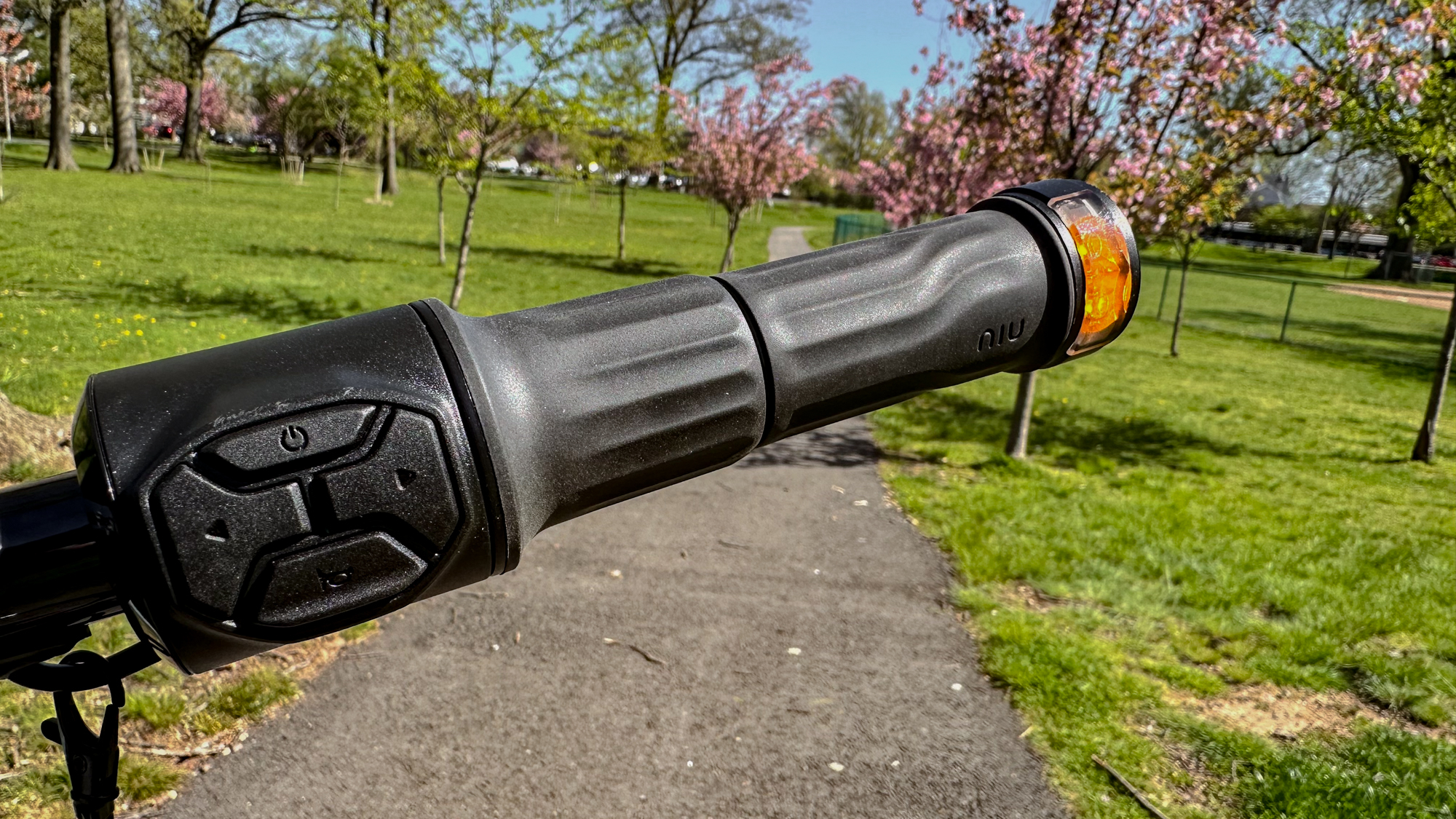
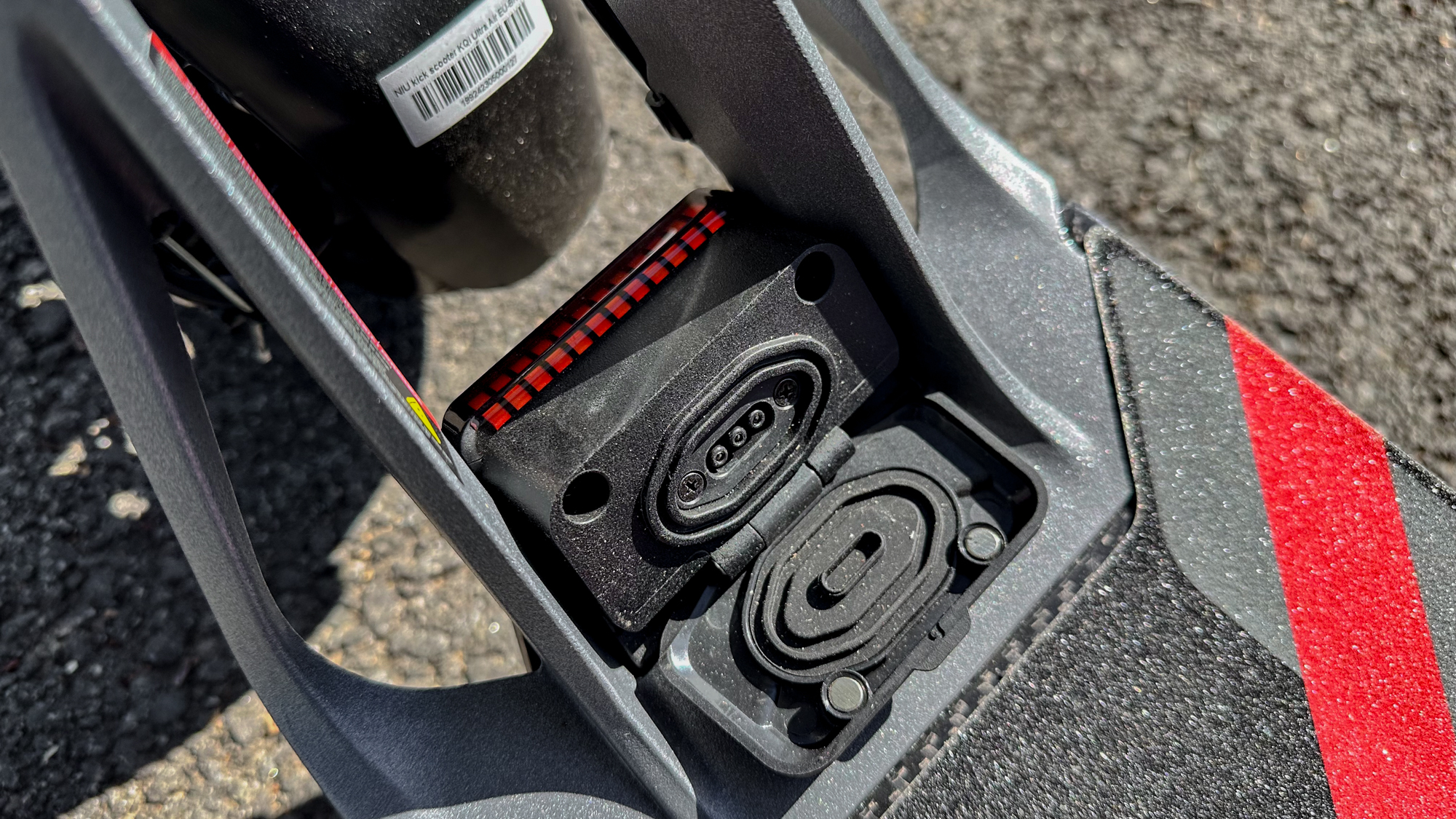
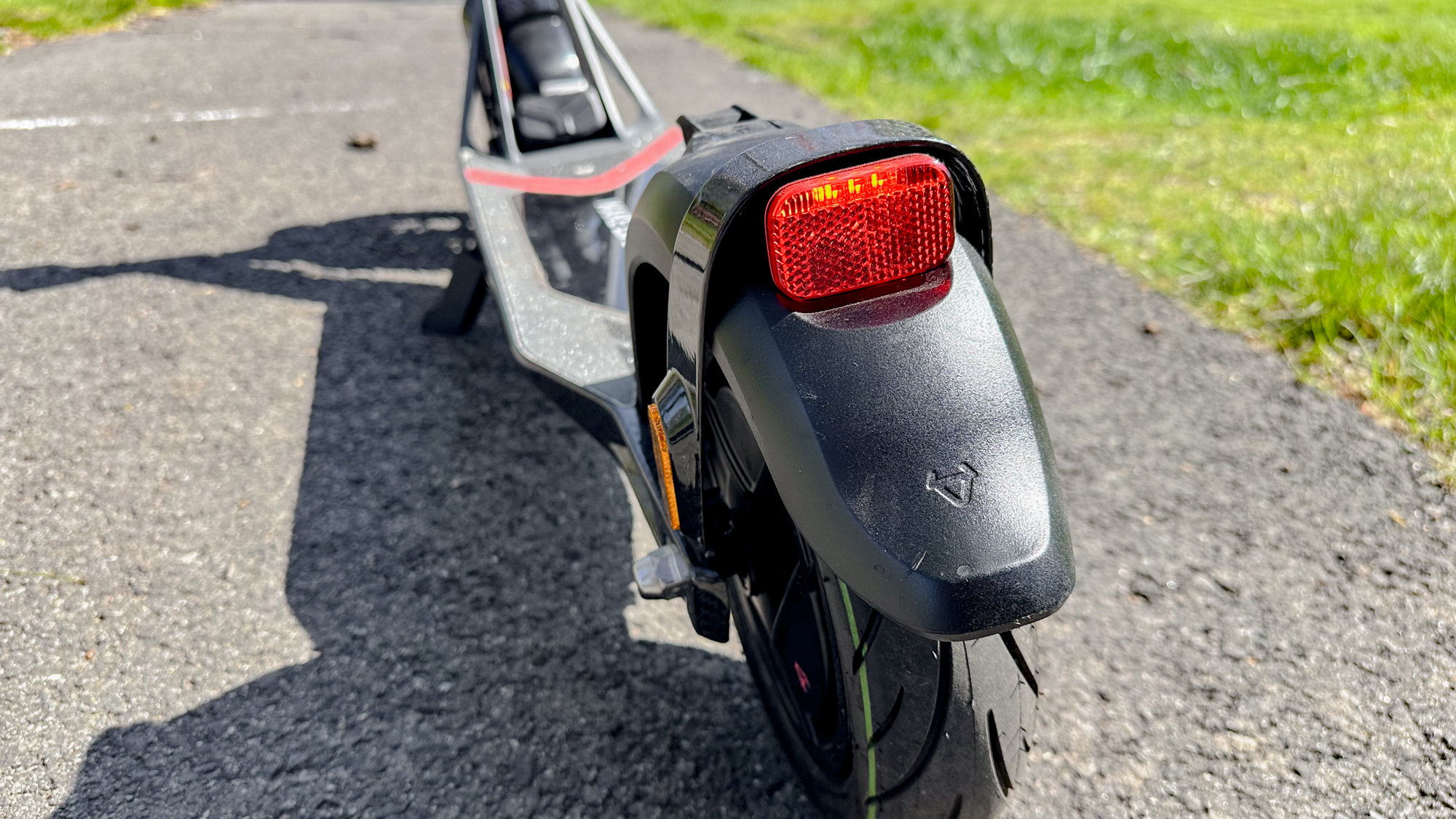
Top speed: 20 MPH
Max range: 31 miles
Weight: 26.5 pounds
Max rider weight: 265 pounds
Tires: 9.5-inch tubeless
Motor: 350W (700W max)
Battery: 451.2Wh/48V
Size: 21.3 x 46.7 x 44.9 inches (unfolded), 18.9 inches folded
The KQi Air is one of the lightest scooters I’ve tested; only the Unagi Model One (26.1 pounds) is in the same league. That’s because, like the Unagi, the Air uses carbon fiber as part of its frame — specifically the top of the deck as well as the downtube and handlebars.
Compared to the Unagi, the Air is slightly larger. It has a longer wheelbase, wider platform, and larger wheels. As a result, it’s not quite as compact as the Unagi, which makes it a bit harder to stuff underneath a train seat. The KQi Air’s latching mechanism, while easy to use, also involves a step or two more than the Unagi’s, so folding it and unfolding it is not as seamless.
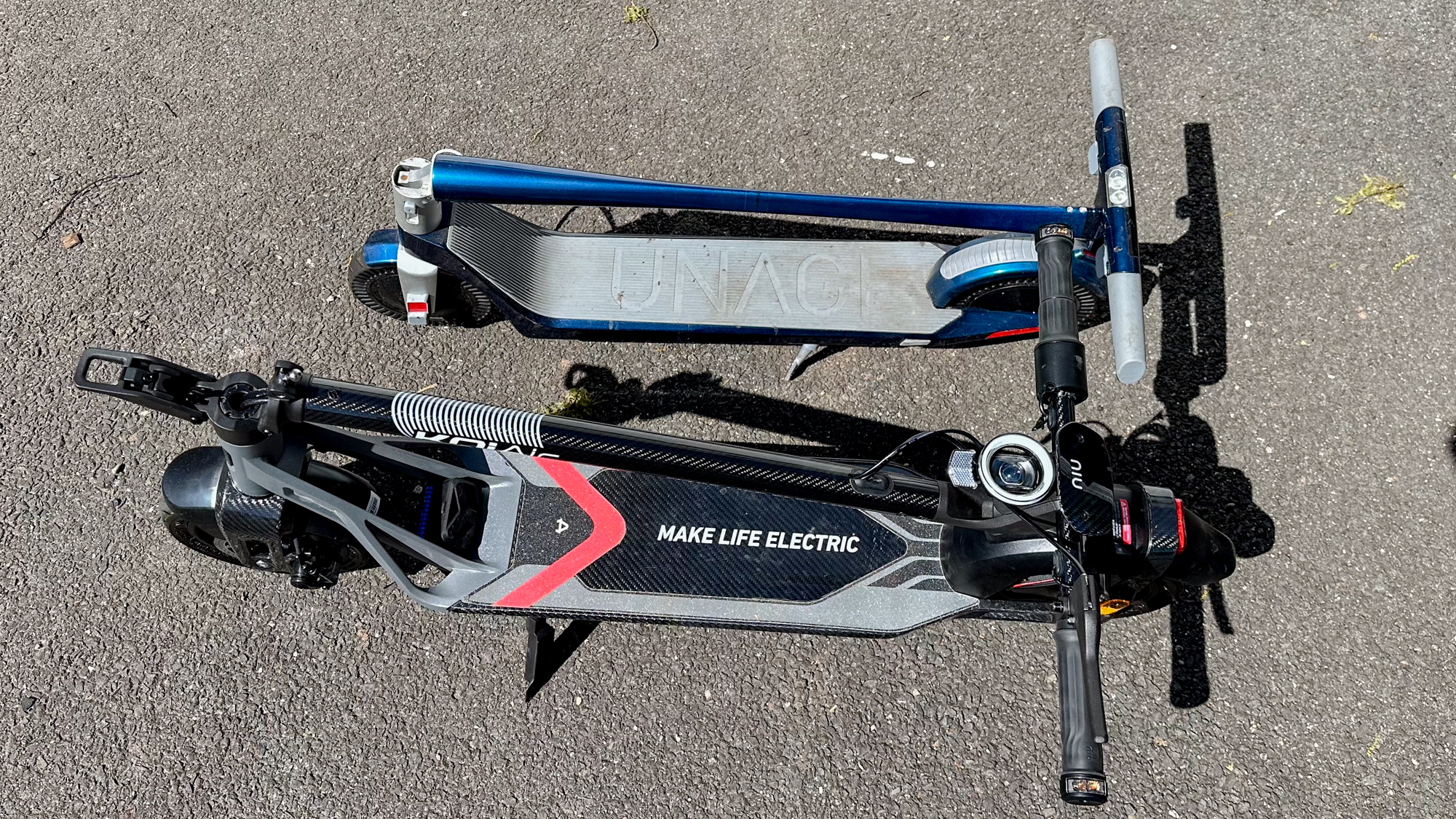
On both ends of the handlebar is a bright orange LED turn signal, which is controlled via two buttons on a control panel by your right hand; I’ve found this is the best place for these controls, because it allows you to still use your left hand to operate the scooter’s brakes. Also here is a power button, which doubles as the scooter’s headlight on and off control, and a button for the electronic horn. Just to the left is a twist throttle that I found very responsive, but having tested a lot of electric scooters, I have a preference for a button.

In the middle of the handlebars is NIU’s trademark halo light; it looks like a small ring light, and stays on all the time, to help make you more visible. In the center of it is the Air’s headlight, which was more than bright enough for me to find my way home in the dark. Cleverly, the light is flat at the top and rounded on the bottom, so there’s less of a chance of you blinding oncoming drivers.
Get instant access to breaking news, the hottest reviews, great deals and helpful tips.
A triangular magnesium bracket connects the deck to the downtube on the Air; not only does it look neat, but conveniently, there are some large gaps that made it really easy for me to thread one of the best bike locks through and secure it. Also here is the scooter’s proprietary charging port, as well as an array of LEDs that change color based on the scooter’s status; for instance, they’ll turn green when the batteries are recharging, and red when you’re really hitting the gas.
NIU KQi Air review: Performance, battery life, and range
While it lacks suspension of any kind, I found the Air’s air-filled tires to deliver a comfortable ride; it was much less jarring than the Unagi, which has smaller rubber wheels.The scooter accelerated swiftly when I twisted the throttle, and it was equally quick to stop when I applied the brakes.
Its 350W motor worked as advertised, and reaching speeds of 19 MPH on level terrain. It was also strong enough to get me up a 6-percent grade hill at 9-10 MPH. That’s similar performance to the Unagi Model One, but if you have steeper hills to climb, you may want a scooter with a more powerful motor, such as the NIU KQi Max 3.
NIU claims that the Air has a max range of 31 miles, but as I’ve found with most electric scooters, the actual range will be a good deal less, depending on the size of the rider and the hilliness of the roads you’re using. I took the scooter on a 40-minute ride, traveling about 10 miles in total, and drained the battery 60%. That would come out to a max range of 17 miles, which is far below NIU’s claims, but on a par with most electric scooters I’ve tested.
However, I did find that if you use Bluetooth via your phone to lock and unlock the scooter, its battery will run down a lot faster when you’re not using it. I let it go for a few days in my garage with a 50% charge, only to come back and find the battery completely drained.
NIU KQi Air review: Features and app
Apart from its weight, the KQi Air has a few other features that help it stand out from other scooters. To help prevent the scooter from being stolen, you can enable two security measures. The scooter comes with two NFC cards, about the same size as a credit card, that you tap on the scooter’s display to turn it on.
If you’re in the habit of misplacing things (as I am), you can also configure the scooter to automatically unlock once it comes in Bluetooth range of your smartphone. This needs to be set up using NIU’s smartphone app.
Try to move the scooter without either of these methods, and its wheels will lock up and its lights will flash. Via the app, you can even have the scooter’s alarm sound. I tested it, and it’s obnoxiously loud.
Within the NIU app, you can also set the max speed of the scooter, as well as the level of its regenerative braking; the higher you set it, the faster the scooter will slow down when you ease off the accelerator. The app also shows you distance traveled, battery life remaining, and lets you customize the lighting. You can also configure the scooter so that up to five other people can unlock it with their smartphones, too. Connecting the scooter to my iPhone via Bluetooth was a little finicky, and weirdly, when it was linked properly, the scooter showed up twice in the list of connected Bluetooth devices. That’s not an error, according to NIU. Apart from that, though, it all worked well.
NIU KQi Air review: Verdict
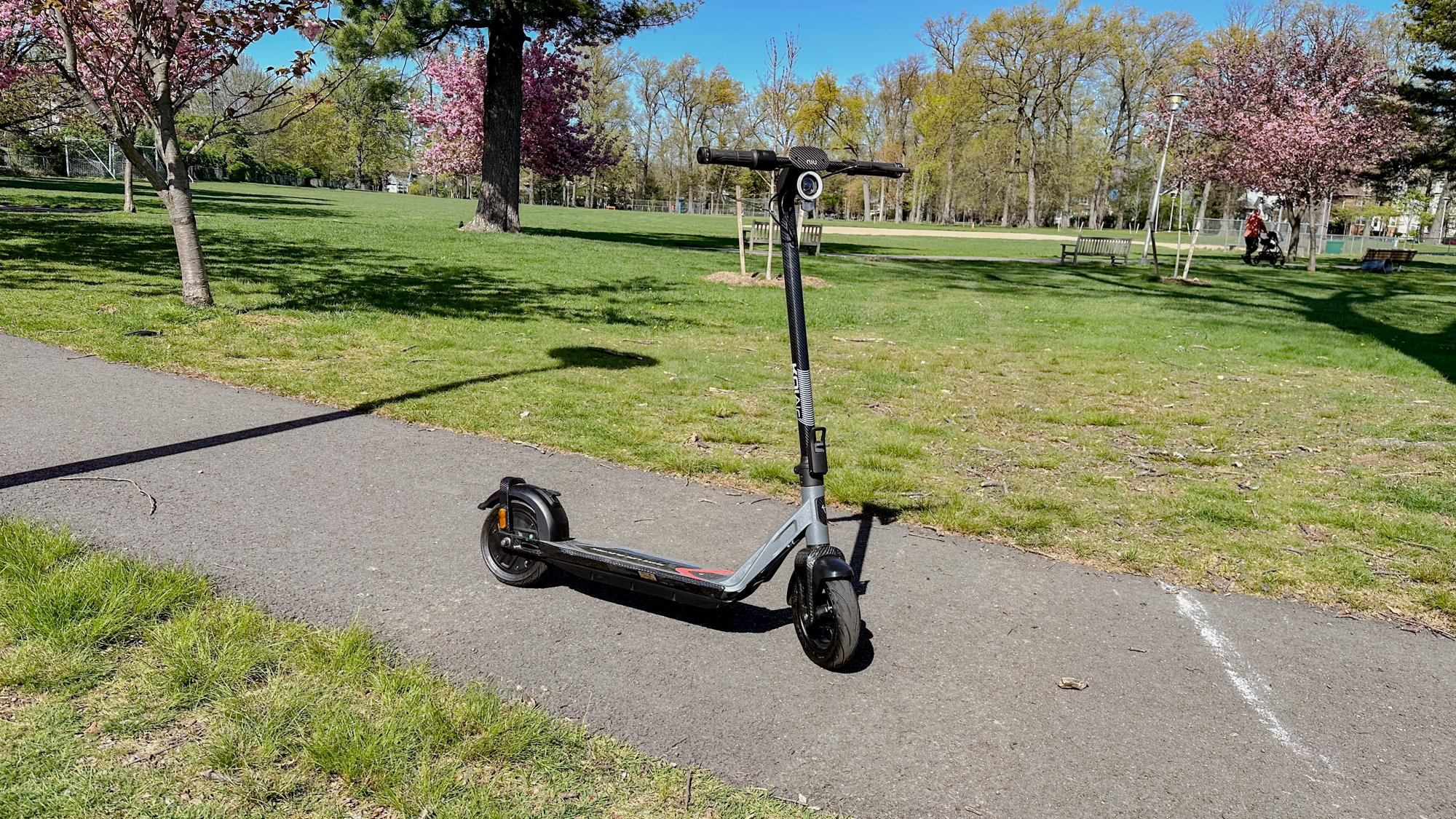
Picking a scooter to call the best overall is pretty tricky, as everyone has different needs. However, I think that the NIU KQi Air is, for now, the best electric scooter for most people. It’s reasonably fast and powerful, has very good range, and is light enough for almost anyone to carry around easily. What’s more, its turn signals and electronic locking add some needed safety and security elements when using the scooter.
However, at $1,000, the KQi Air is not cheap. If you’re on a budget, the Hiboy S2 costs less than half as much, offers a nice ride with a few frills for the price, but has a more limited range.
If you need a scooter that can literally go the distance, both the Segway Ninebot Kickscooter Max G2 and the NIU KQi3 Max will get you around 40 miles, and have the power to get you up steep hills. However, they both weigh twice as much as the KQi Air. If you want something even more compact, the Unagi Model One Voyager is a great pick for around the same price, but gives you a rougher ride.
So, if you’re looking for a highly portable scooter that can get you around — and has some nice extras — look no further than the NIU KQi Air.

Michael A. Prospero is the U.S. Editor-in-Chief for Tom’s Guide. He oversees all evergreen content and oversees the Homes, Smart Home, and Fitness/Wearables categories for the site. In his spare time, he also tests out the latest drones, electric scooters, and smart home gadgets, such as video doorbells. Before his tenure at Tom's Guide, he was the Reviews Editor for Laptop Magazine, a reporter at Fast Company, the Times of Trenton, and, many eons back, an intern at George magazine. He received his undergraduate degree from Boston College, where he worked on the campus newspaper The Heights, and then attended the Columbia University school of Journalism. When he’s not testing out the latest running watch, electric scooter, or skiing or training for a marathon, he’s probably using the latest sous vide machine, smoker, or pizza oven, to the delight — or chagrin — of his family.
